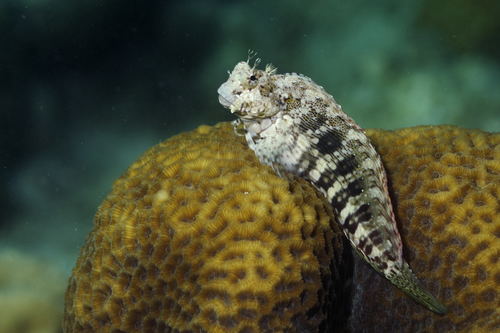
Jewelled Blenny
The Atlantic Bluefin Tuna (Thunnus thynnus) is a magnificent and highly migratory species of tuna found in the Atlantic Ocean. Renowned for its size, speed, and commercial value, it plays a crucial role in the marine ecosystem and is a prized catch in fisheries worldwide.
2 6 years
Lifespan
14 cm
Length
Least Concern
Conservation Status
null km/h
Swimming speed
Herbivorous
Diet
Sedentary
Migration
Appearance Overview
The Atlantic Bluefin Tuna has a robust, streamlined body built for speed and endurance, with a metallic dark blue dorsal side and a silvery-white underside.
Coloration
Dark metallic blue on top, silvery-white on the bottom
Body Shape
Torpedo-shaped, streamlined
Fins
Two dorsal fins, the first depressible; small finlets running from dorsal and anal fins to the tail
Keel
Strong lateral keel on the caudal peduncle
Length
Up to 13 feet (4 meters), commonly around 6.5 feet (2 meters)
Weight
Up to 2,000 lbs (900 kg), commonly around 550 lbs (250 kg)
Diet
Carnivorous, feeding on a variety of fish (such as herring, mackerel, and hake), squid, and crustaceans.
Feeding Behavior
Highly active predator, using speed and coordinated group hunting to chase down and ambush prey. They can dive to significant depths to hunt.
Social Behavior
Forms large schools, often segregated by size. Highly migratory, traveling vast distances across oceans.
Commercial Relevance
Extremely high value, particularly in the sushi and sashimi markets, where its fatty meat is considered a delicacy. This high demand drives significant fishing pressure.
Conservation measures
Strict fishing quotas, seasonal closures, minimum size limits, and monitoring programs managed by international bodies like ICCAT. Efforts also include promoting sustainable aquaculture.
Status
Endangered (according to IUCN, though some populations are managed differently)
Threats
Overfishing (historically and ongoing in some areas), bycatch in fishing gear, climate change impacting prey distribution and spawning grounds, and habitat degradation.
Habitat Distribution
Depth Range
0-1,000 meters (0-3,280 feet), but typically found in the upper layers of the water column.
Geographic Range
Atlantic Ocean, including the Mediterranean Sea, Gulf of Mexico, and surrounding areas. Western Atlantic, Eastern Atlantic and Mediterranean.
Preferred Environment
Pelagic, open ocean environments; prefers temperate waters but can tolerate a wide range of temperatures.
Reproduction and Life Cycle
Breeding Habits
Spawns in warm waters, primarily in the Mediterranean Sea and the Gulf of Mexico. Spawning occurs in specific areas with suitable conditions for larval development.
Development Stages
Eggs hatch into larvae, which drift with the currents and feed on plankton. They grow rapidly, developing into juveniles and eventually adults.
Fecundity
Highly fecund; females can produce up to 30 million eggs per spawning season, depending on their size and condition.
Maturity Age
Matures relatively late, at around 4-8 years of age, although this can vary between different populations.
Faqs about Jewelled Blenny
How fast can Atlantic Bluefin Tuna swim?
Atlantic Bluefin Tuna are among the fastest fish in the ocean, capable of bursts of speed up to 40-60 mph.
What is the lifespan of an Atlantic Bluefin Tuna?
They can live up to 40 years, though the average lifespan is often shorter due to fishing pressure.
Are Atlantic Bluefin Tuna warm-blooded?
Yes, they are warm-blooded, maintaining a body temperature higher than the surrounding water, which helps with muscle efficiency during high-speed pursuits.
Where are Atlantic Bluefin Tuna found?
They are found in the Atlantic Ocean, from the Mediterranean Sea to the Gulf of Mexico, and from Newfoundland to Brazil.
How many eggs can a female Bluefin Tuna lay?
Females can release millions of eggs (up to 30 million) during a spawning season.
How far do Bluefin Tuna migrate?
They migrate across entire oceans, often traveling thousands of miles between feeding and spawning grounds.
What organization manages Bluefin Tuna populations?
ICCAT (International Commission for the Conservation of Atlantic Tunas) is the primary body responsible for managing Bluefin Tuna populations.
Why is Bluefin Tuna so expensive?
The high demand for Bluefin Tuna in sushi and sashimi markets, particularly in Japan, drives up its price and contributes to overfishing.
Copyright @ Nature Style Limited. All Rights Reserved.
 English
English